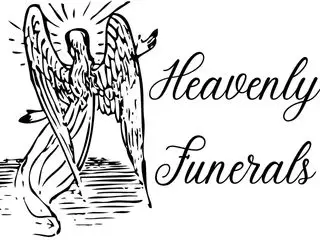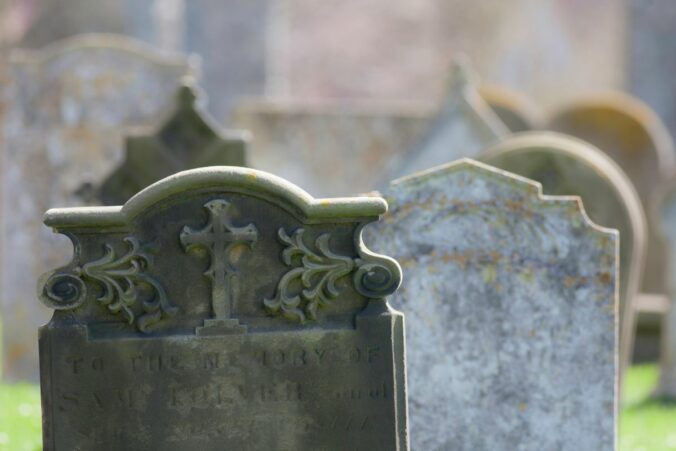Table of Contents
Headstones are a time-honored tradition, providing us with an opportunity to honor our loved ones who have passed away. While many people think that all headstones are supposed to face east, the truth is more complex and interesting than you might expect.
In this article, we’ll explore why tombstones in traditional western cemeteries usually face east while others don’t, as well as what it means when they do. Discover the fascinating history behind cemetery gravestones and their orientation!
Headstones are traditionally placed facing east. This is based on the belief that when Jesus returns, he will come from the east.
In Christianity, the belief that headstones face east has been around since at least the 4th century and it remains a widely-held custom today. Most cemeteries in western countries will have a burial ground where they place headstones facing east by default but some also give families the option of choosing other directions or orientations if they prefer.
What Is the Meaning Behind Headstones Facing East?
East-facing headstones is a common tradition among many religions and cultures around the world. This practice has been used for centuries and is believed to signify that the deceased person is being guided toward eternal life in heaven or everlasting peace in the afterlife.
The direction of the east signifies new beginnings, hope, and optimism which makes it a fitting symbol of spiritual transition.
In some Eastern religious traditions such as Hinduism, Jainism, and Buddhism, headstones in the cemetery are commonly placed facing east to honor ancestors who have gone into an afterlife realm where they will eventually reach enlightenment.
In other cultures like the Christian one, graves are sometimes faced toward Jerusalem as a sign of devotion to God.
In addition to its religious symbolism, facing headstones east often has practical purposes as well. By orienting them this way, families can make sure that their loved ones’ gravestones get optimal exposure from sunlight throughout the day so that their memories remain alive for generations to come.
Where Does The Tradition Of Having A Headstone Face East Come From?
The tradition of a headstone and cemetery plot facing east can be traced back to the Ancient Egyptians. They believed that by orienting graves in a west-east direction, they could provide their deceased with an eternal source of light and warmth from the sun.
This belief was passed down through generations and still remains popular today, particularly in Christian cemeteries where it is thought that this orientation will help the dead reach Heaven faster on Judgement Day.
Another possible origin for this tradition that I want to share comes from ancient pagan beliefs which held that north was traditionally associated with death and darkness while south symbolized life and rebirth.
Therefore, burying someone facing south would ensure them a smooth journey into the afterlife and greater success after resurrection. The idea then evolved to include all cardinal directions but maintained a preference for the east as it was closely linked with the sunrise
It was seen as a fresh start or the beginning of something new.
In some cultures, including Jewish burials, there has been no specific direction given; instead, importance is placed on positioning the body so it faces Jerusalem (the spiritual home) regardless of what direction it may actually point towards geographically speaking.
How Is It Practiced Today?
Headstones facing east is a practice with roots in ancient history, but today it is not as commonly observed. In many cases, headstones are placed without any particular direction being given to the cemetery workers.
In some religions or cultures, however, headstones still face east by tradition or belief. These include certain Catholic and Orthodox churches which traditionally orient their graves so that they face towards Jerusalem and the East where Jesus ascended into heaven according to scripture.
Other faiths such as Judaism may place stones facing east for reasons of ritual purity associated with the sun rising in the East each morning.
Today’s cemeteries have also become more flexible when it comes to honoring personal preferences about how a grave should be oriented. For example, some people might prefer that their loved one’s final resting places be faced away from busy roads or other buildings nearby.
Others may want them looking out over an area they feel has special significance or beauty – like a lakefront view or fields of wildflowers. While still others might want them aligned towards family members’ plots who are buried elsewhere on site.
Ultimately what matters most is respecting individual wishes and creating a peaceful resting place that can bring comfort to family and friends in times of grief.
Benefits of Eastern-Facing Headstones
The idea that headstones should be east-facing might seem strange to some, but there are actually several benefits associated with this tradition. Here are a few of the potential advantages of eastern-facing headstones:
1. Symbolism – East is traditionally seen as a symbol of beginnings and renewal, making it an ideal direction for placing a headstone that marks the start of eternal life.
2. Spiritual Significance – Many religions associate eastward-facing gravestones with resurrection and spiritual rebirth into heaven or the afterlife.
3. Improved Legibility – A cemetery’s prevailing sunlight can often make western-facing stones difficult to read due to glare from direct light exposure or shadows cast on the text by sunbeams. Eastern-facing stones tend to have fewer visibility issues since they face away from direct light sources and toward shaded areas where legibility is less affected by natural elements like wind, rain, and snowfall throughout the year.
Considerations When Choosing Whether A Headstone Will Face East
When choosing the direction a headstone faces, it is important to take into consideration several factors. The most significant factor is that of religious and cultural belief systems.
Many cultures and religions regard the east as the favored direction for gravesites due to its symbolic connections with resurrection, eternal life, and the rising sun. In addition, some believe that the souls of loved ones will rise up in the east towards Heaven if they are buried facing this direction.
Site orientation should also be considered when deciding on a headstone’s direction. If there are other graves or monuments nearby, then it might be beneficial to have all stones facing toward one side so that everything appears uniform and organized from afar.
Furthermore, taking into account local climate conditions such as wind patterns can help determine which way would provide more protection for any engraved materials on a headstone from weathering over time.
Finally, family preference may play an important role when determining what type of stone should face eastward at a gravesite.
Some families prefer to have individualized designs or sayings inscribed on their headstones; thus ensuring that each memorial best reflects the personality and legacy of their deceased loved one while still adhering to any special cultural or religious beliefs associated with burial sites being orientated in an easterly fashion
Other Directional Options for Memorials and Grave Markers
Headstones and grave markers are not always placed facing east. In fact, there are many other directional options that families can opt for:
1. Facing West – this is the most common direction of placement after East and is where grave markers are placed in a position where the front is facing west. This symbolizes a safe journey into the afterlife.
2. South-facing – sometimes seen as representing hope and peace in death.
3. North-facing – typically seen as a sign of strength or protection from evil spirits during the afterlife journey.
4. Non-directional – no particular orientation implies an acceptance that we have no control over life’s mysteries and our ultimate fate beyond this world; instead, non-directional memorials provide recognition for those who remain on earth to remember them fondly without any specific spiritual implications attached to their choice of marker orientation
Are There Any Symbolism or Superstitions Related to the Orientation of a Headstone?
Yes, there are several beliefs and symbols in the orientation of a headstone.
It is believed that burying someone where their head faces east ensures that they will rise up when Jesus returns on Judgment Day. This east facing tradition originates from Christianity but has been adopted by other religions as well.
In some cultures, it is thought to bring good luck if the deceased’s face is placed towards the West in a cemetery, as this symbolizes sunset and a new beginning in paradise beyond death. Some Hindus believe that placing a person’s headstone northwards helps ensure entry into heaven.
A few Native American tribes also have rituals involving stones pointing East or West to indicate direction when coming back to life after death.
In addition, many people associate an eastward-facing stone in a cemetery with healing energy because of its connection to sunrise and the growth potential each new day brings. The color of the marker can represent different things too; white often suggests purity while black implies strength and protection of those who remain behind.
Additionally, ornamental features like carvings, flowers, or religious symbols may be included for personal reasons or cultural norms associated with particular faith traditions honoring ancestors or deities related to afterlife journeys.
- Difference Between a Monument and a Memorial: More Than Just Stone-Cold Facts! - October 17, 2025
- Difference Between a Headstone and a Gravestone: The Ultimate Rock Rivalry - October 17, 2025
- Different Headstone Shapes: A Grave Decision Guide to Monument Styles - October 17, 2025



Leave a Reply